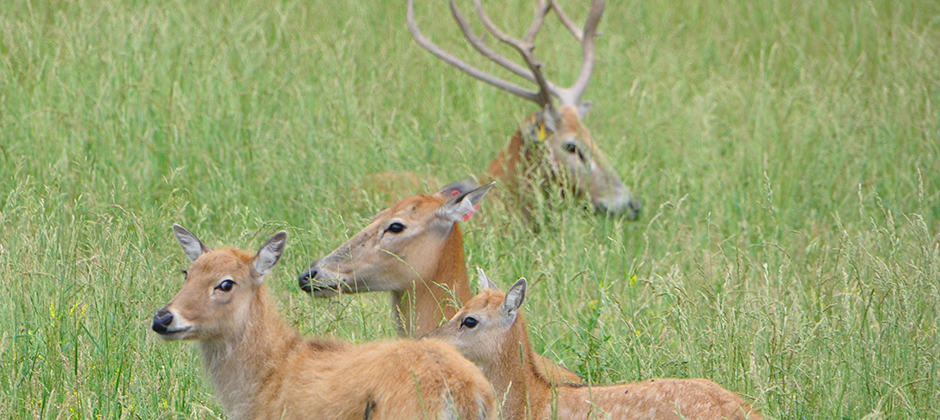Share this article
A rare deer species has faced plenty of threats—but CWD may not be one
A rare Chinese deer has seen over a century of threats—ultimately resulting in its extinction in the wild. But research recently suggests that, thanks to their genetics, chronic wasting disease—a deadly neurological disease in cervids—might not be one of them.
Records show that Père David’s deer (Elaphurus davidianus) have been kept in captivity in royal gardens for over 1,000 years. Today, apart from a few successful reintroductions into reserves, they still exist largely in captivity. Their disappearance in the wild is due in part to political and social upheaval following China’s 1900 Boxer Rebellion, when most of the remaining wild populations were killed.
A priest named Armand David secured several individuals in private collections, and many of their descendants remain in North American zoos. But as chronic wasting disease has spread in deer throughout North America, researchers became concerned that this rare deer species could be vulnerable to infection even in captivity.
“CWD is transmissible to a number of different deer species,” said Tolulope Perrin-Stowe, a postdoctoral fellow at the University of Wisconsin-Madison. “Organizations such as the Association of Zoos and Aquariums were quite concerned about endangered deer species housed in North America.”
Perrin-Stowe led a study published in Conservation Genetics to test genetic markers in the deer that could confer susceptibility to the disease. They couldn’t experiment on such an endangered population, so they relied on comparing alleles of prion proteins found naturally in the deer to the alleles of other species that were exposed and susceptible to CWD to determine if they shared traits. Prion proteins are normal in deer, Perrin-Stowe said. But when an infectious prion enters their body, that causes prion proteins to change shape, lose function and causes disease.
After studying 27 Père David’s deer in zoos in Ohio, California and New York, researchers found two different variations in the prion protein genes. One of those alleles was the same one found in European fallow deer (Dama dama) and is connected to reduced CWD susceptibility.
This is promising news for the species. “Preventing them from contracting CWD is always going to be the most important goal,” Perrin-Stowe said. “Studies like this help us determine what might be the potential vulnerability of different cervid species.”
She said it also suggests the importance of maintaining diversity in those genes through captive breeding.
“It’s always of concern when a disease is spreading, and it’s important to get as much research as we can,” she said.
Header Image: Genes in Père David’s deer suggest the rare species might not contract chronic wasting disease. Credit: Ted








